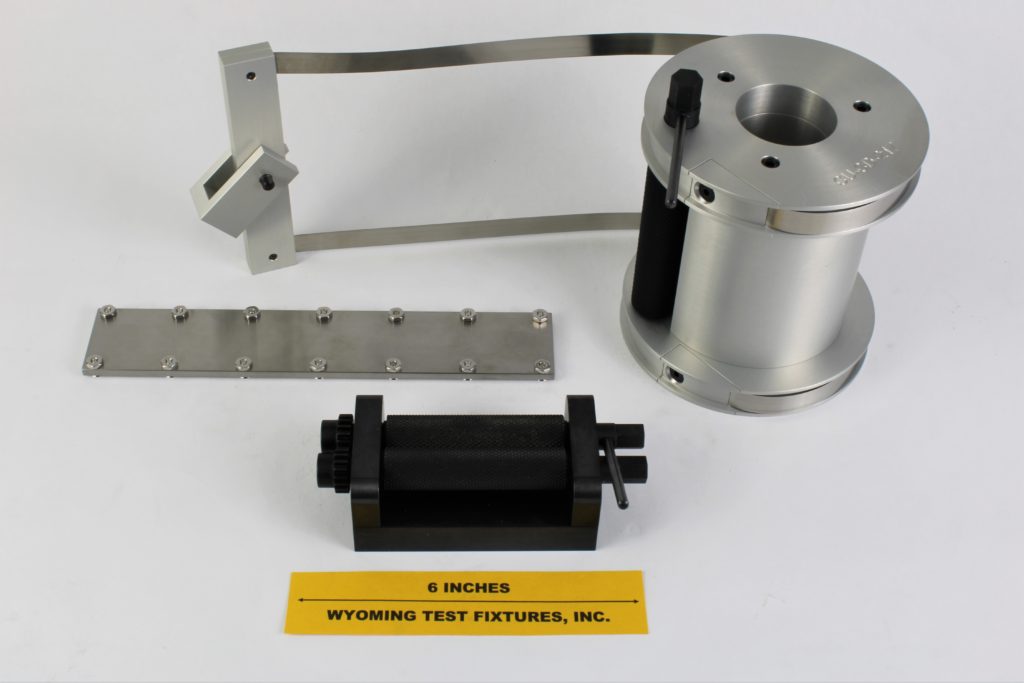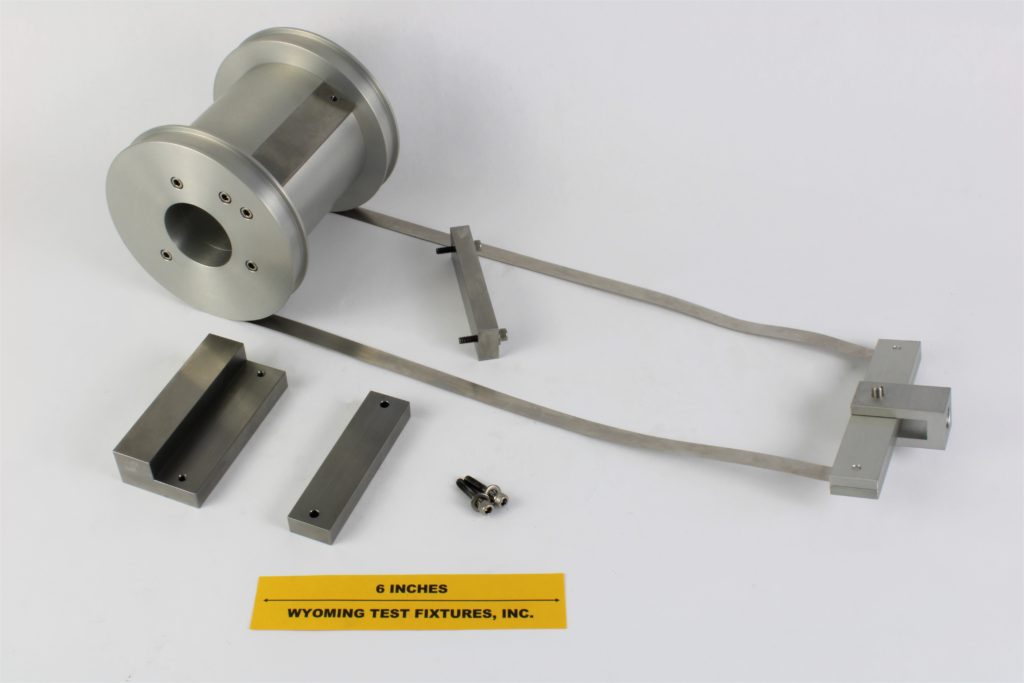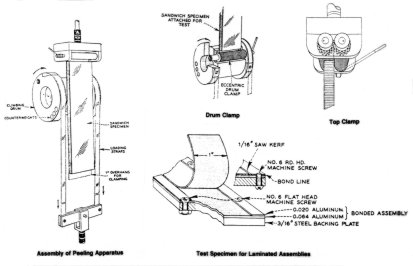Climbing Drum Peel Test Fixture (ASTM D1781)
Model No. WTF-CD (steel and aluminum)

Fig. 1: Drum with clamp, optional laminated panel backing plate, and top clamp.
The Climbing Drum Peel test was first standardized by ASTM in 1960 (Reference 1). The complete ASTM D1781 fixture is shown in the above photograph. It attaches to the crosshead and base of the tensile testing machine via 0.50"-13 UNC threaded holes at each end. The materials of construction are as specified by the ASTM standard. For example, the drum and the bottom attachment fitting at the other end of the stainless steel flexible straps are anodized 6061-T6 aluminum (and appear as a lighter color in the photograph). Aluminum is used to control the weight of the climbing drum within the limits specified in the standard. The two specimen end clamps are low carbon steel, with hardened steel knurled roller grips. All carbon steel parts are black-oxided to reduce rusting and corrosion when kept lightly oiled.
The standard flat sandwich panel specimen is 3 in. wide and at least 12 in. long, including a 1 in. overhang of one of the face sheets at each end. Thickness of the core is not dictated, except that the sandwich specimen should not bend while the face sheet is being peeled. A core thickness on the order of 0.5 in. is typical, with face sheet thicknesses on the order of 0.020 in., depending upon the material system being tested.
Solid laminated specimens can also be tested using the same fixture. An optional 9.5 in. long, 1.75 in. wide, 0.19 in. thick steel backing plate can be provided for this purpose, shown in the center of the photograph in Fig. 1. The force required to peel a layer off of the solid laminate is determined, the optional steel backing plate being attached to the solid laminate to prevent bending of the remainder of the laminate during the test.
The general test method is also included in MIL-STD-401B (Reference 2), but with a simpler and less effective specimen gripping system. One end of the specimen face sheet to be peeled off is bolted to the drum, the other end being bolted between the halves of a clamp. This version, shown in the photograph of Fig. 2 below, can also be supplied if requested, but is not commonly used.

Fig. 2: MIL-STD-401B version of Climbing Drum Peel Test Fixture (simple bolted clamps are used rather than the cam-action knurled grips specified in ASTM D1781).
The following Fig. 3, taken from ASTM D1781, indicates the usage of the fixture. Detailed additional information is contained in the standard itself, as well as in Reference 3.

Fig. 3: Usage information from ASTM D1781
Source of Additional Information:
1) ASTM Standard D1781-98 (1998; Reapproved 2012), "Climbing Drum Peel Test for Adhesives," American Society for Testing and Materials, West Conshohoken, Pennsylvania (first issued in 1960).
2) Military Standard Mil-STD-401B, “Sandwich Constructions and Core Materials; General Test Methods,” Department of Defense, Washington D.C., September 1967.
3) T.J. Whitney and D.R. Askins, "Determination of Minimum Adherend Thickness for Climbing Drum and Floating Roller Adhesive Tests," Report WL-TR-91-4086, Wright Lab., Wright Patterson AFB, Ohio, January 1992.

